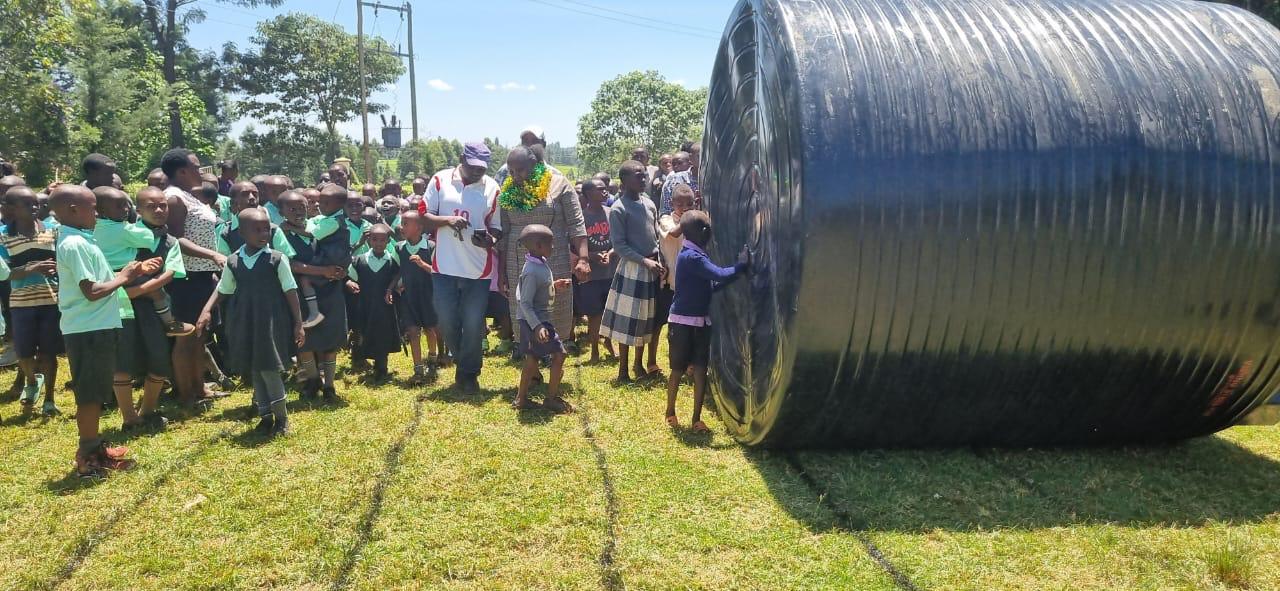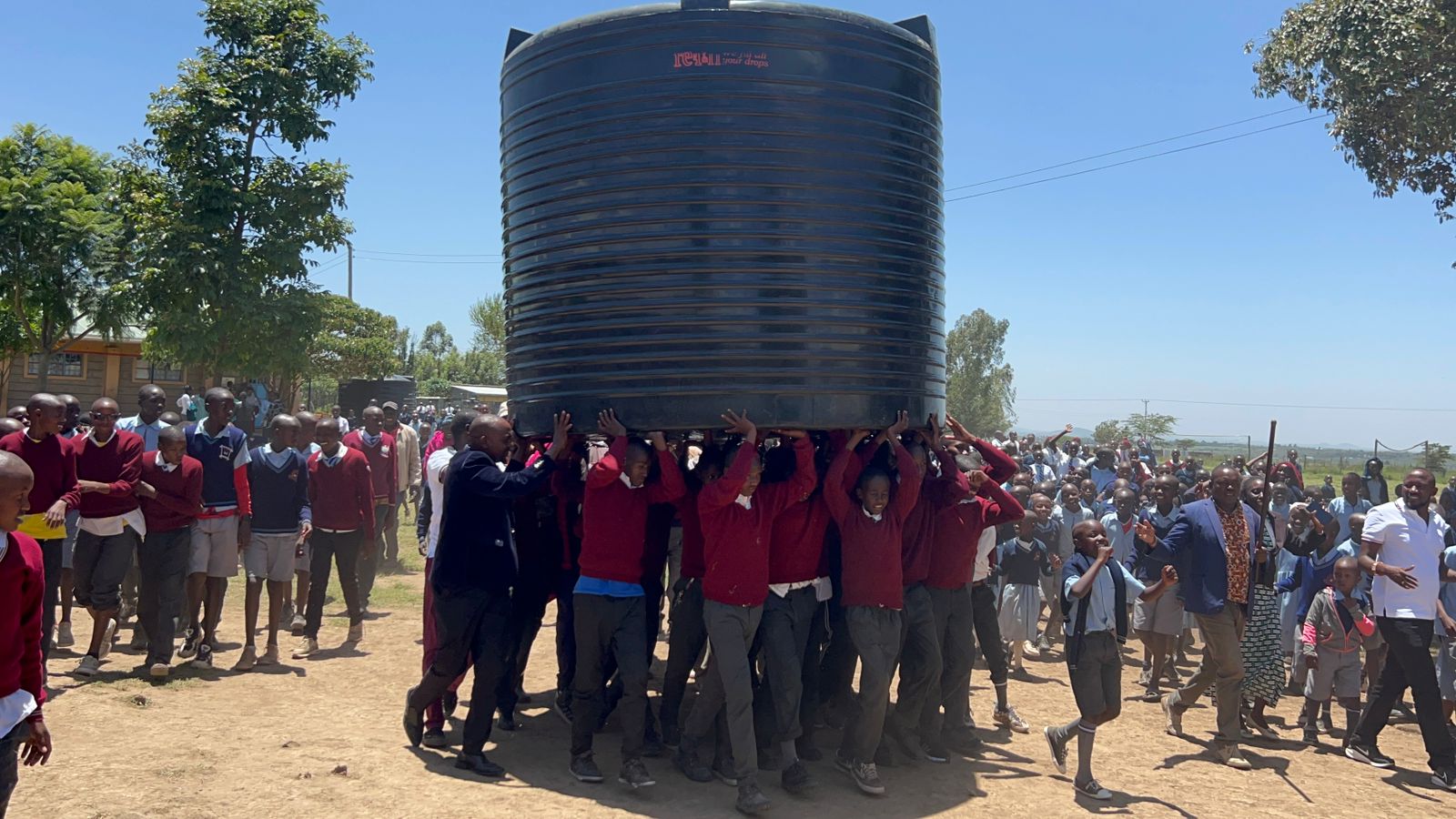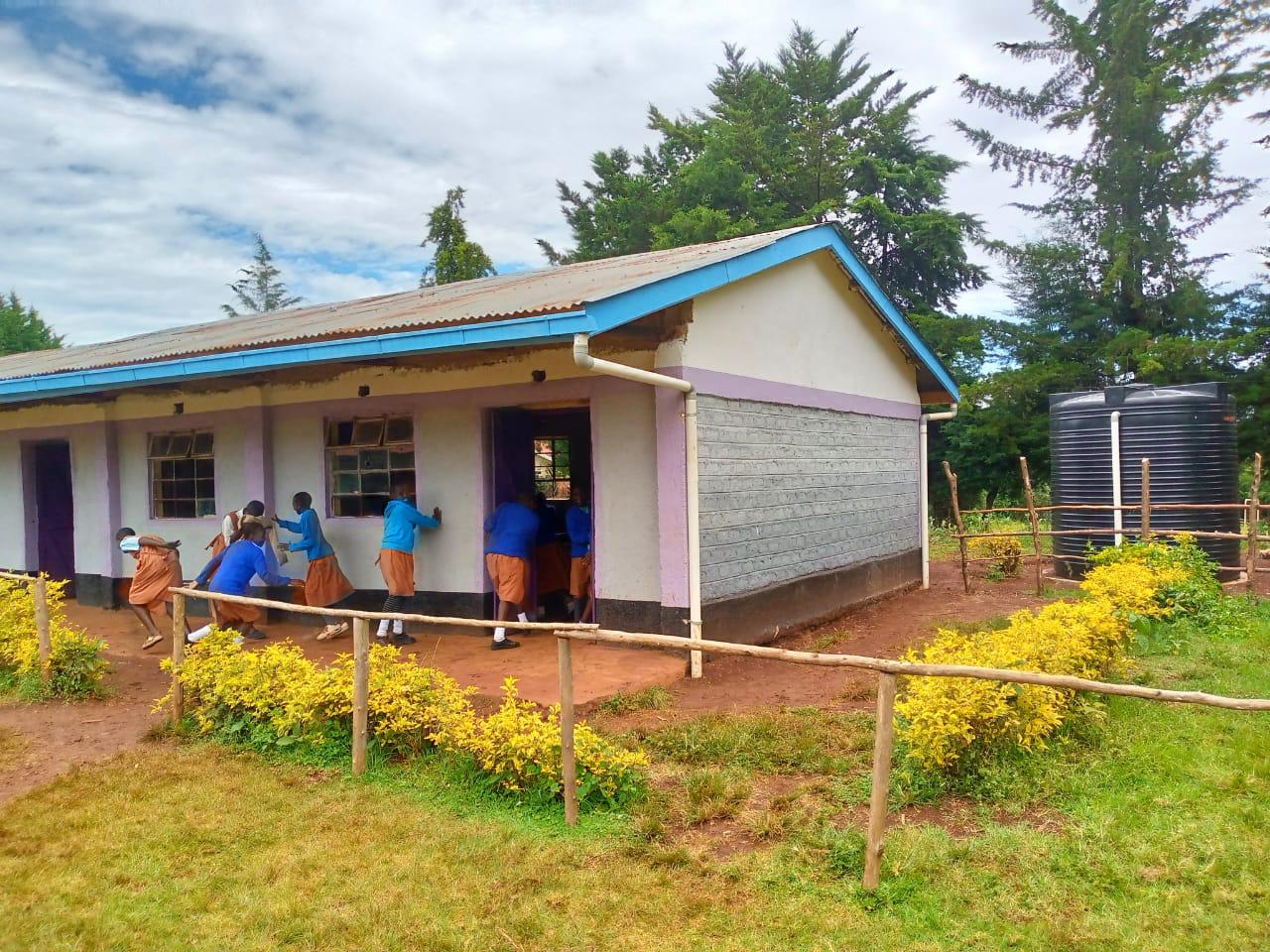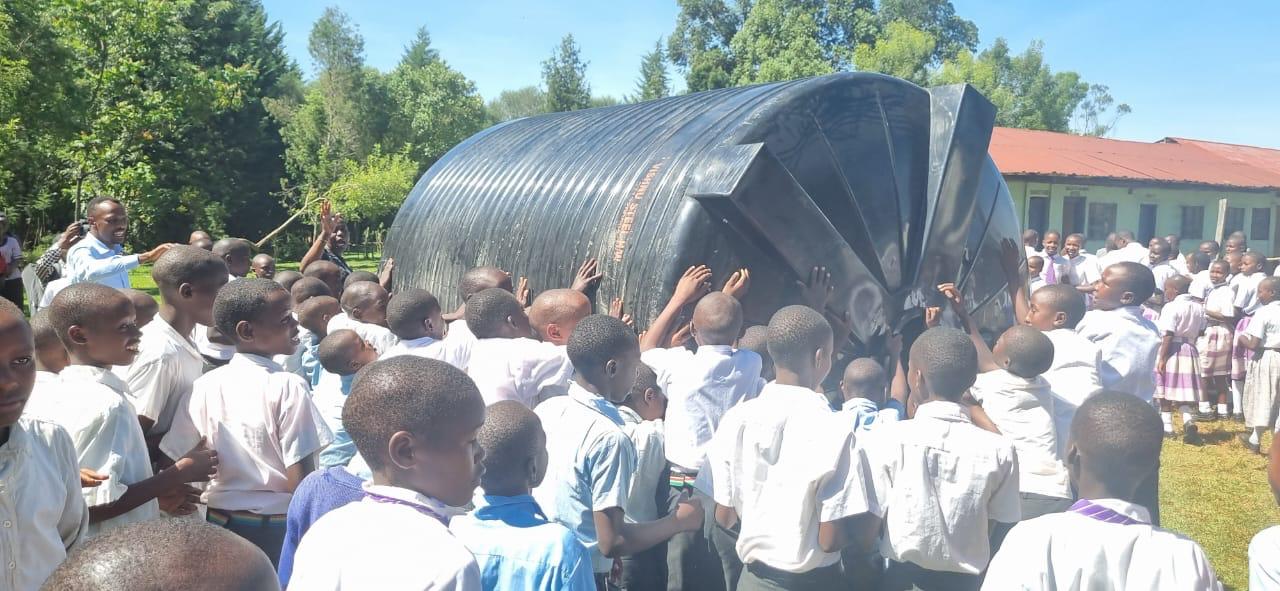Water Tanks: Inspiring Change in Western Kenya
The uncharacteristically wet January of 2024 brought more than just rainfall to western Kenya—it sparked a new opportunity for innovation and community engagement, particularly in the region’s primary schools. Water, a precious resource in this part of the world, is often in short supply, especially within school settings where few have access to a reliable water source. Yet, every school boasts a pitched metal roof, which during the rainy season, sheds water onto the ground unless equipped with rain gutters.
Recognizing the potential of this abundant rainfall, a project was born. In February and March, 20 primary schools spanning from Bomet County to the Masai Mara were presented with a unique challenge: to design and implement a system that would not only collect rainwater efficiently but also utilize this water resource in a creative and sustainable manner.
The first part of the challenge involved harnessing rainwater through innovative gutter systems that directed the flow towards large 10,000-liter water tanks strategically placed at each school. Depending on the rainfall intensity, these tanks could fill within hours or a couple of days, becoming vital reservoirs capable of sustaining the school’s water needs for a week or more.
The second part of the challenge was equally inspiring: engaging the local community in the design, installation, and ongoing utilization of these water systems. Each school was tasked with rallying community support, encouraging participation, and ensuring that the project was integrated into the fabric of daily life.
The ideas that emerged were as diverse as the landscapes they served. Some schools envisioned using the collected rainwater to nourish gardens and trees, promoting agricultural education and sustainable food production. Others planned to utilize the water for animal husbandry, ensuring livestock had access to clean, reliable hydration. Remarkably, one school proposed the creation of a fishpond, combining water conservation with aquaculture education.
As the challenge progressed, excitement and collaboration blossomed within each community. Parents, teachers, and local leaders joined forces, contributing their skills and resources to make the project a success. This collective effort not only reinforced the importance of water conservation but also fostered a sense of pride and ownership among all involved.
In May, the culmination of this endeavor will be marked by a special event: a judging panel composed of esteemed guests from the United States will visit each school to evaluate the impact and creativity of their water projects. Beyond the competition, however, lies a deeper legacy—the seeds of sustainable change sown within the hearts and minds of young Kenyans and their communities, inspired by the gift of rain.









